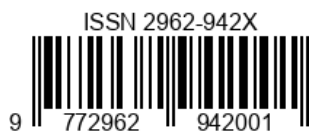Pemberdayaan UMKM Di Kelurahan Rembang Dengan Pemanfaatan Digital Marketing Sebagai Sarana Promosi
DOI:
https://doi.org/10.55606/jpkm.v2i3.171Keywords:
UMKM, digital marketing, promotionAbstract
Rembang Village is one of the villages in the Sananwetan District, Blitar City. The Rembang sub-district has the Rembang Rise program by creating a WhatsApp group by the sub-district officials as a place for MSMEs in the Rembang area to carry out promotions. Even though many MSMEs have joined this group, until now they are not familiar with digital marketing and only rely on conventional methods to promote their products. The purpose of this community service program is to provide understanding to MSME players about the benefits of digital marketing as promotional advice. With the existence of a digital marketing introduction program for MSME players in the Rembang Village, it is hoped that they can expand their market to sell their products.
References
Arisandi, F. &. (2023, April). Pemberdayaan UMKM Melalui Pengenalan Pemasaran Digital Khususnya Media Sosial Sebagai Sarana Promosi di Era Pandemi. Jurnal Panrita Abdi, 7(2), 286. Retrieved from http://journal.unhas.ac.id/index.php/panritaabdi
Mahyuni, T. &. (2023, April). Pemberdayaan UMKM Melalui Pengenalan Pemasaran Digital Khususnya Media Sosial Sebagai Sarana Promosi di Era Pandemi. Jurnal Panrita Abdi, 7(2), 286. Retrieved from http://journal.unhas.ac.id/index.php/panritaabdi
Setiyana, M. S. (2020). Sosialisasi Digital Marketing pada Usaha Mikro Kecil Menengah (UMKM). Jurnal Pengabdian Masyarakat: Darma Bakti Teuku Umar, 2(1), 63. Retrieved from https://doi.org/10.35308/batiku.v2iI.2050
Downloads
Published
How to Cite
Issue
Section
License
Copyright (c) 2023 Andi Maulana, Nurjanti Takarini

This work is licensed under a Creative Commons Attribution-ShareAlike 4.0 International License.







